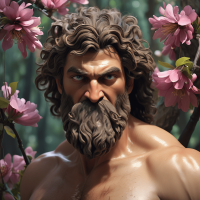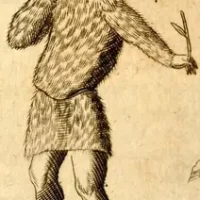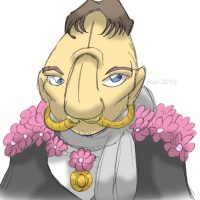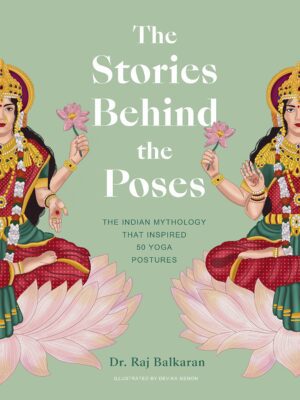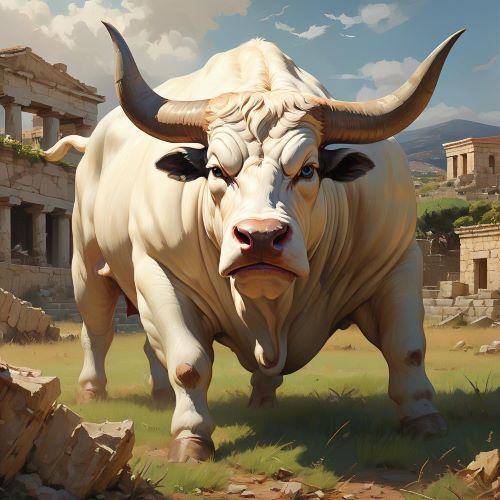Astomi : The Fragrant Ones
Listen
At a glance
| Description | |
|---|---|
| Origin | Greek Mythology |
| Classification | Mortals |
| Family Members | N/A |
| Region | Greece |
| Associated With | Earth, Flowers, Forests |
Astomi
Introduction
The Astomi, an intriguing tribe steeped in Greek mythology, stand out for their distinctive attributes and customs. Their presence reverberates through ancient texts, including those penned by Pliny the Elder, a prominent Roman author and natural philosopher. These enigmatic beings, known for their peculiar physical traits and whispered powers, have long fascinated scholars and enthusiasts. Within the rich fabric of Greek mythology teeming with fantastical creatures and extraordinary beings, the Astomi occupy a niche all their own, veiled in secrecy and characterized by their unique existence.
Physical Traits
The Astomi, resembling humans yet bearing distinctive physical traits, notably lack mouths, setting them apart within the realm of mythological beings. This absence of oral cavities is often interpreted symbolically, suggesting a peaceful disposition as they are unable to engage in verbal disputes or partake in solid food consumption. Descriptions, primarily sourced from Roman accounts, portray them as hairy figures with rugged physiques, hinting at a possible affinity with wild, untamed environments.
Their conspicuous lack of mouths raises intriguing inquiries into their fundamental necessities. According to the writings of Pliny the Elder, drawing upon the narratives of the Greek explorer Megasthenes, the Astomi defy conventional needs for sustenance, neither requiring food nor drink in the typical sense. Depicted as humanoid in form, their most notable trait remains the absence of a mouth, a subject of speculation regarding their sustenance methods. While some suggest they absorb nutrients through osmosis, others propose supernatural capabilities enabling survival devoid of conventional nourishment. Despite the mysteries surrounding them, one fact remains evident: the Astomi stand out amidst Greek mythology due to their singular anatomical peculiarity.
Family
The Astomi lack a distinct divine lineage, setting them apart from many other creatures within Greek mythology and contributing to their aura of mystery. Their origins remain elusive, often regarded more as a tribe or race rather than a cohesive family unit. Speculation surrounds their lineage, with some accounts suggesting descent from primordial gods, born amidst the chaos preceding creation, while others propose ties to lesser-known divinities existing on the periphery of mythological lore. Despite the ambiguity surrounding their familial connections, the Astomi are consistently portrayed as solitary beings, inhabiting remote and desolate landscapes far removed from mortal realms.
Details regarding the Astomi’s familial structure or societal organization are sparse, further deepening the enigma surrounding their origins. No specific deity is linked to their creation, leaving their genesis veiled in obscurity. Some scholars conjecture that they might have been perceived as a distant human tribe, their perceived “otherness” embellished in mythic retellings. The name “Astomi,” derived from Greek, translates to “mouthless ones,” emphasizing their distinctive feature. Another appellation attributed to them is “Gangines,” potentially indicating a connection to the Ganges River in India. Megasthenes, situating them near the river’s source, may have encountered tales of peculiar inhabitants in that region, contributing to the genesis of the Astomi myth.
Other names
The Astomi earned the moniker “the mouthless people” owing to their distinctive trait, a feature reflected in their name itself. “Astomi” originates from the Greek words “a” (without) and “stoma” (mouth), translating directly to “without a mouth.” Throughout Greek mythology, they are known by various epithets, each shedding light on different facets of their enigmatic existence. Some texts refer to them as “Aporroi,” highlighting their absence of a mouth, while others dub them “Ablepharon,” emphasizing their lack of eyes, deepening their aura of mystery. These alternative appellations provide additional layers to the perceived attributes and essence of the Astomi, heightening their allure and enigma.
Powers and Abilities
The Astomi possess a distinctive method of sustenance that sets them apart from other beings. Unlike conventional consumption, they rely on the scent of apples and flowers to sustain themselves, showcasing their symbiotic relationship with nature. This unique ability is complemented by their rumored heightened sense of smell, which is crucial for their survival. While renowned for their lack of mouths, the Astomi are rumored to possess additional extraordinary capabilities. Some legends suggest heightened senses compensate for physical limitations, while others hint at mastery over arcane arts, including illusion-weaving and elemental manipulation. Despite their seclusion, they’re depicted as formidable beings capable of defending against adversaries, adding to their mystique.
Their lack of mouths intricately ties to their alleged sustenance method—they purportedly subsist solely on the pleasant aromas of flowers, apples, and fragrant plants. Their heightened olfactory senses facilitate drawing nourishment from these scents. However, this sensitivity proves a double-edged sword; strong, unpleasant odors, as per Pliny, could prove fatal to them, adding complexity to their existence. Though not explicitly associated with magical abilities, their unique reliance on scents suggests a potential link to the mystical. Fragrances and incense often feature in Greek rituals, hinting at a connection between the Astomi and the divine realm.
Modern Day Influence
The Astomi, although less familiar compared to other Greek mythological entities, have made their mark on modern literature and art. Their portrayal often explores themes of peace, harmony, and coexistence with nature, sparking the creativity of numerous artists and writers across various media forms. Their enigmatic nature and distinctive lifestyle continue to inspire creators, transcending ancient mythology to resonate in contemporary culture.
In literature and cinema alike, the Astomi’s mysterious allure captivates audiences, with authors integrating their mythology into tales of adventure and suspense. Filmmakers leverage their enigmatic qualities to craft memorable characters and settings, evoking a sense of wonder associated with these mythical beings. Moreover, scholars delve into the depths of Astomi mythology, driven by the desire to unveil the secrets of these elusive creatures.
Despite their relative obscurity, the Astomi’s influence reverberates in modern popular culture. Their unique concept of sustenance solely through scents finds resonance in science fiction and fantasy narratives. For instance, the Cael in Anne McCaffrey’s Dragonriders of Pern series bear resemblance to the Astomi, relying on specific flowers for survival, further perpetuating the legacy of these enigmatic beings in contemporary storytelling.
Related Images
Newest addition
Frequently Asked Questions
What is lorem Ipsum?
I am text block. Click edit button to change this text. Lorem ipsum dolor sit amet, consectetur adipiscing elit. Ut elit tellus, luctus nec ullamcorper mattis, pulvinar dapibus leo.
What is lorem Ipsum?
I am text block. Click edit button to change this text. Lorem ipsum dolor sit amet, consectetur adipiscing elit. Ut elit tellus, luctus nec ullamcorper mattis, pulvinar dapibus leo.
What is lorem Ipsum?
I am text block. Click edit button to change this text. Lorem ipsum dolor sit amet, consectetur adipiscing elit. Ut elit tellus, luctus nec ullamcorper mattis, pulvinar dapibus leo.
What is lorem Ipsum?
I am text block. Click edit button to change this text. Lorem ipsum dolor sit amet, consectetur adipiscing elit. Ut elit tellus, luctus nec ullamcorper mattis, pulvinar dapibus leo.
What is lorem Ipsum?
I am text block. Click edit button to change this text. Lorem ipsum dolor sit amet, consectetur adipiscing elit. Ut elit tellus, luctus nec ullamcorper mattis, pulvinar dapibus leo.

